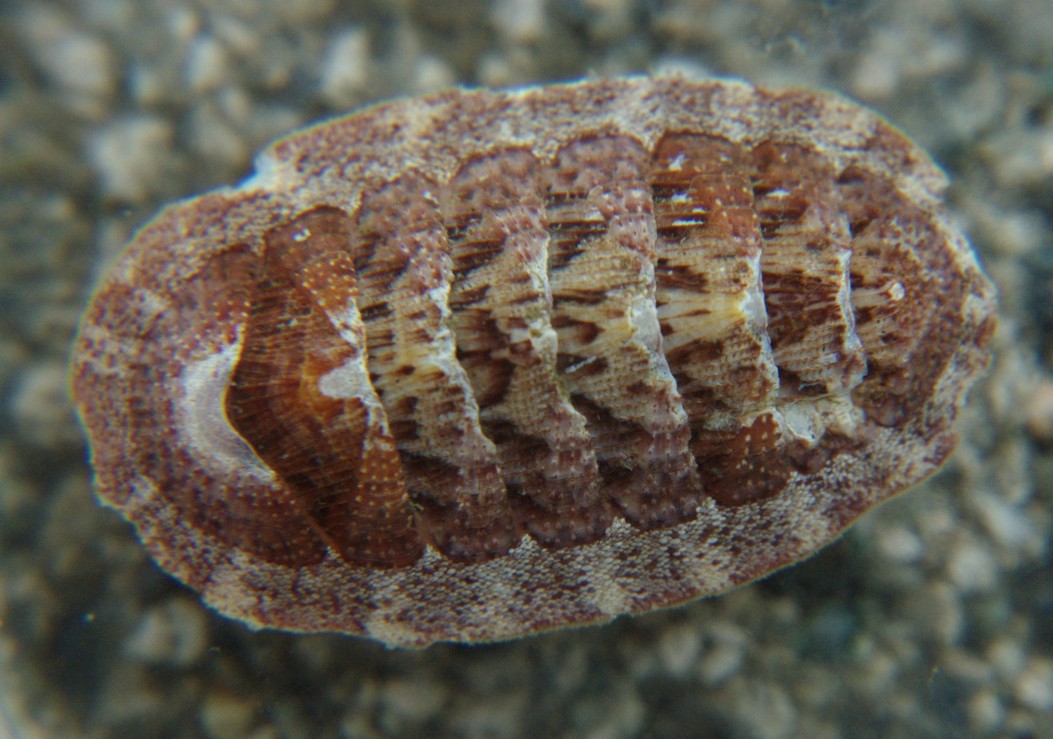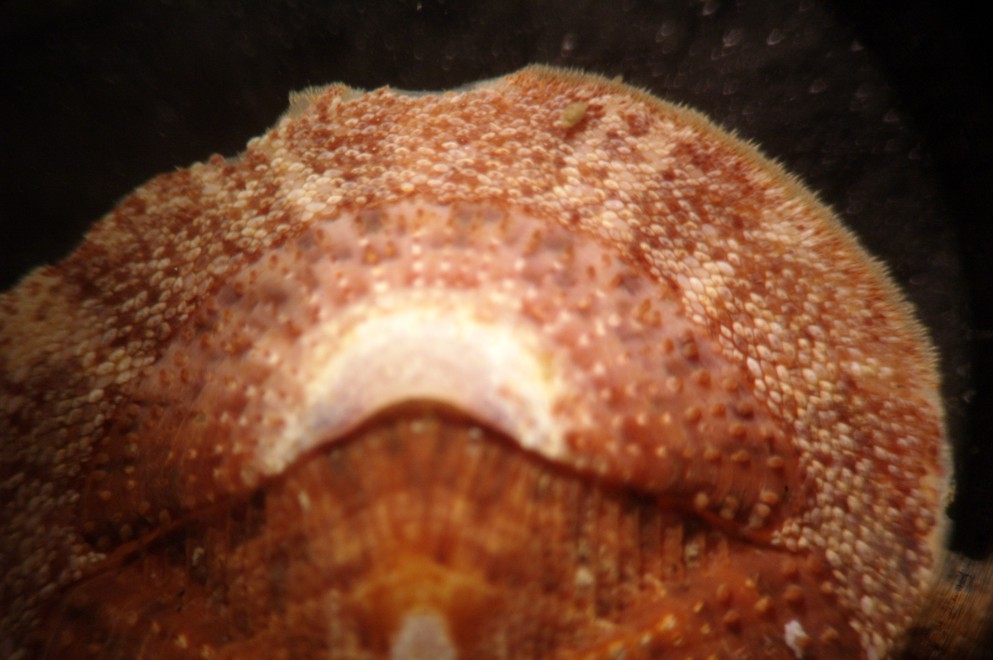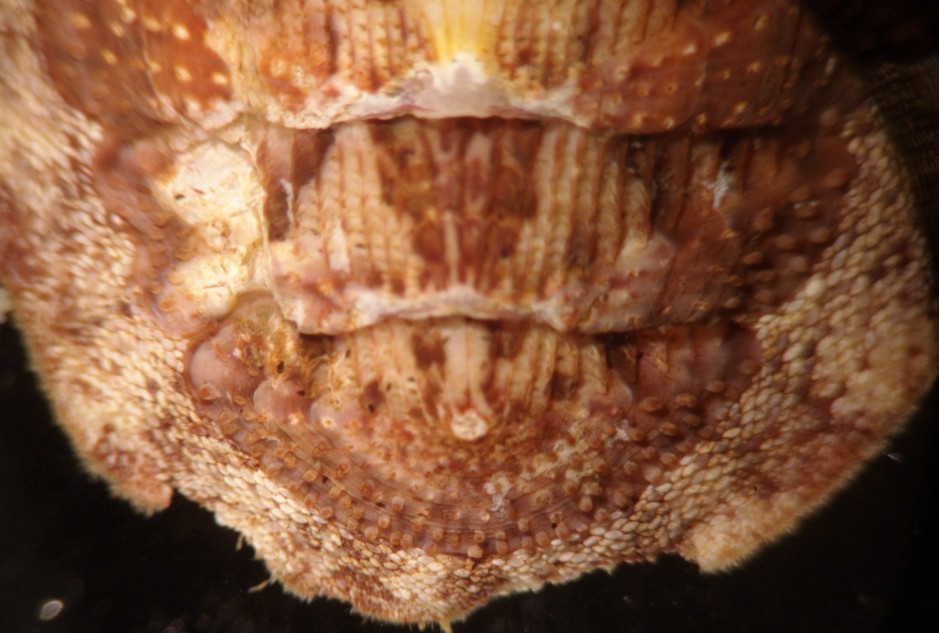Description: In this chiton, the dorsal surface of the girdle is covered with overlapping oval scales (photo), but has no spicules nor hairs (spicules may be along the margin). Plate 1 is about as long as plate 8. Plates 2-7 have nodular bumps on the lateral areas (photo), and the central areas have longitudinal ridges which diverge anteriorly (photo). Some pits may be between the ridges. Valves (plates) are reddish, brownish, or occasionally greenish-purple. Girdle with bands of yellow and red. May have white blotches. Length to 4 cm, and roughly half as wide.
How to Distinguish from Similar Species: This is the only common intertidal chiton in this area with its girdle covered with scales (some others are subtidal).
Geographical Range: Northern Alaska to northern Mexico; Japan
Depth Range: Intertidal to 90 m
Habitat: Usually lives under rocks.
Biology/Natural History:
Females
of this species lay their eggs in cases. The
bryozoan Farella
elongata sometimes attaches to the ventral surface of the
girdle.
| Return to: | |||
| Main Page | Alphabetic Index | Systematic Index | Glossary |
References:
Dichotomous Keys:Flora and Fairbanks, 1966 (as Ischnochiton mertensii)
Kozloff, 1987, 1996
General References:
Harbo,
1997
Johnson
and Snook, 1955 (as Ischnochiton
mertensii)
Lamb
and Hanby, 2005
Ricketts
et al., 1985
Scientific Articles:
Ferreira, A.J., 1978. The genus Lepidozona
(Mollusca: Poluplacophora) in the temperate eastern Pacific, Baja
California
to Alaska, with the description of a new species. Veliger 21:
pp
19-24
Helfman, E.S., 1968. A ctenostomatous ectoproct epizoic on
the
chiton Ishnochiton mertensii. Veliger 10:
pp. 290-291
Web sites:
General Notes and Observations: Locations, abundances, unusual behaviors:
This view of the head with plates 1-2 shows the overlapping oval scales on the girdle, the globular bumps on the lateral parts of the plates, and the longitudinal ridges in the center portions of the plates which diverge anteriorly.
This view of the posterior end with plates 6-8 shows similar
features.
The longitudinal ridges in the central parts of the plates are more
clearly
visible here.
Authors and Editors of Page:
Dave Cowles (2012): Created original page
CSS coding for page developed by Jonathan Cowles (2007)
Salish Sea Invertebrates web site provided courtesy of Walla Walla University


